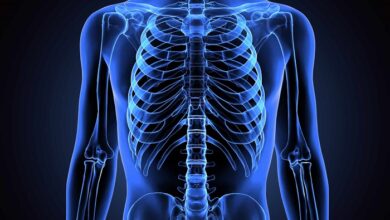Understanding Septal Infarct: Causes, Symptoms, and Treatment

Septal infarct is a medical condition that affects the septum, the wall dividing the two lower chambers of the heart. It occurs when the blood flow to this region is compromised, leading to tissue damage and potential heart complications. In this article, we will delve into the causes, symptoms, and treatment options for septal infarct, shedding light on this important cardiac condition.
What is Septal Infarct?
Septal infarct is a type of myocardial infarction, commonly known as a heart attack. It specifically affects the septum, which is the muscular wall that separates the left and right ventricles of the heart. The septum plays a crucial role in maintaining the proper functioning of the heart by preventing the mixing of oxygenated and deoxygenated blood.
Causes of Septal Infarct
Septal infarct occurs due to the blockage of one or more coronary arteries that supply blood to the heart muscle. The most common cause of this blockage is the buildup of plaque, a combination of cholesterol, fat, and other substances, in the arteries. The plaque can rupture and form blood clots, obstructing the flow of blood to the septal region and causing an infarct.
Other factors that contribute to the development of septal infarct include hypertension, diabetes, smoking, obesity, and a family history of heart disease. Additionally, certain lifestyle choices and habits, such as a sedentary lifestyle and a diet high in saturated fats, can increase the risk of septal infarct.
Symptoms of Septal Infarct
The symptoms of septal infarct can vary depending on the severity of the condition. Common symptoms include chest pain or discomfort, shortness of breath, fatigue, dizziness, and nausea. Some individuals may also experience pain radiating to the arms, neck, jaw, or back.
It is important to note that septal infarct can present with atypical symptoms, especially in older adults, women, and individuals with diabetes. Thus, it is crucial to seek immediate medical attention if any concerning symptoms arise, as prompt diagnosis and treatment can significantly improve the outcome.
Diagnosis and Treatment
To diagnose septal infarct, a healthcare professional will typically perform a thorough physical examination, review the patient’s medical history, and order additional tests. These tests may include electrocardiography (ECG), echocardiography, cardiac catheterization, and blood tests to assess cardiac enzymes.
The treatment of septal infarct aims to restore blood flow to the affected region, relieve symptoms, and prevent further damage. Immediate medical intervention is vital, and it often involves the administration of medications such as aspirin, nitroglycerin, and beta-blockers to reduce pain, prevent clot formation, and improve blood flow.
In some cases, invasive procedures may be necessary. Percutaneous coronary intervention (PCI), commonly known as angioplasty, can be performed to open blocked arteries and restore blood flow. Coronary artery bypass grafting (CABG) may also be considered in more severe cases, where a blood vessel from another part of the body is used to bypass the blocked artery.
Prevention and Lifestyle Changes
Prevention plays a crucial role in reducing the risk of septal infarct. Adopting a heart-healthy lifestyle can significantly decrease the chances of developing this condition. Some key preventive measures include:
a. Regular exercise: Engaging in physical activity for at least 30 minutes a day helps maintain cardiovascular health and promotes overall well-being. b. Balanced diet: Consuming a diet rich in fruits, vegetables, whole grains, lean proteins, and healthy fats while limiting the intake of saturated and trans fats is essential. c. Smoking cessation: Quitting smoking and avoiding exposure to secondhand smoke is vital in preventing septal infarct and other heart-related conditions. d. Weight management: Maintaining a healthy weight reduces the strain on the heart and lowers the risk of developing cardiovascular diseases. e. Managing chronic conditions: Effectively managing conditions such as hypertension and diabetes through regular check-ups, medication adherence, and lifestyle modifications is essential.
Conclusion
Septal infarct is a serious cardiac condition that can lead to significant complications if left untreated. Understanding the causes, symptoms, and treatment options can empower individuals to take preventive measures and seek prompt medical attention when needed. By adopting a heart-healthy lifestyle and working closely with healthcare professionals, we can reduce the risk of septal infarct and promote a healthier heart. Remember, prevention is key, and prioritizing cardiovascular health is crucial for a long and fulfilling life.




